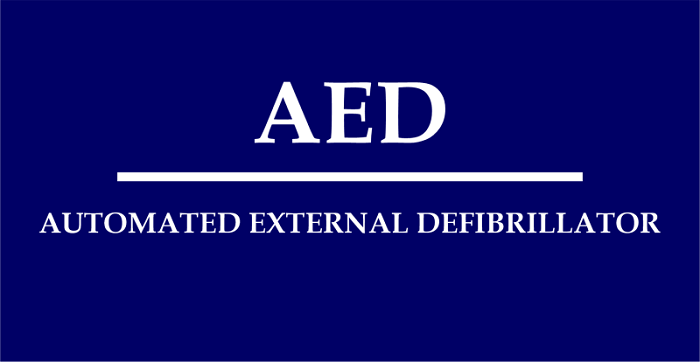What is the full form of AEDAED: Automated External DefibrillatorAED stands for automated external defibrillator. Automated external defibrillators are specially designed electronic devices that are used for life-saving purposes. They are lightweight, life-saving medical equipment mainly used to treat the person who is suffering from sudden cardiac arrest, a condition in which the heart stops beating abruptly and unexpectedly. When applied during the first few minutes of a victim's collapse from sudden cardiac arrest, CPR (cardio-pulmonary resuscitation) and early defibrillation are helpful in saving lives. 
Automated external defibrillators are simple portable devices. The main purpose is to treat those people who are suffering from sudden heart attacks as these medical conditions are getting common in people. To help people in such conditions, AEDs have been essential. Although AED is a very convenient device, it is a little costly. In addition, before using this equipment, one must first consult with doctors. The system used in automated external defibrillators includes many types of accessories, like a battery and pad electrodes. Such accessories typically aid AED in detecting and interpreting an electrocardiogram and administering an electrical shock required for temporary treatment in case of sudden heart attacks. Types of AEDsThere are mainly two types of automated external defibrillators. The first is called public access AED and the second one is professional use AED. Let us discuss each in brief:
Apart from this, AEDs also come in two variants, depending on their function. Among them, one is semi-automated, and the second version is fully automated. One can choose any variant as per the stipulated budget and usage. Now, we see the functionality of semi-automated and fully automated:
Examining AEDs and their Accessories: Has the FDA approved them?In February 2015, the FDA issued a final rule mandating premarket approval (PMA) applications for all AEDs, both new and old, as well as for any required AED accessories. The premarket approval application filing deadline for AEDs, including the necessary AED accessories like batteries, pad electrodes, adapters, and hardware keys for pediatric use, was made mandatory after the final order's (notification) date. Additionally, the FDA sent legal letters to those manufacturers who did not complete the PMA for their AEDs. They were also informed not to advertise their AEDs. Since then, the FDA has been following this process consistently. Over time, the FDA has revised its compliance guidelines on the process of PMAs for AEDs and their essential accessories. The updated compliance policy helps medical facilities, healthcare departments, and manufacturers to remain focused on public health needs by ensuring the quality and reliability of AEDs. There are now AEDs that have received FDA approval. Still, it is advised to check to see if yours is one of them. If it isn't, it is recommended to start making arrangements to switch to an FDA-approved AED. If you or your company has an AED system, the FDA recommends the following things:
Be aware that after February 3, 2022, if your AED is not FDA-approved, AED accessories available on the market after February 3, 2022, may not be working with your AED. For details regarding your particular product, get in touch with the maker of your AED or AED accessories.
Next TopicFull Forms List
|
 For Videos Join Our Youtube Channel: Join Now
For Videos Join Our Youtube Channel: Join Now
Feedback
- Send your Feedback to [email protected]
Help Others, Please Share










